|
Who Were the Tories?
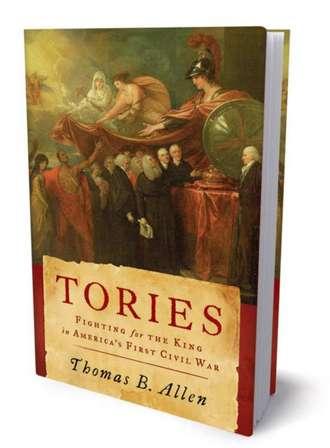 The Declaration of
Independence said that by July 1776 the time had come “for one
people to dissolve the political bands which have connected them with
another.” But the signers of the Declaration knew that they
spoke, not for “one people” but for a divided people.
Tens of thousands of Americans opposed the Revolution. They called
themselves Loyalists; the Patriots called them Tories. The Declaration of
Independence said that by July 1776 the time had come “for one
people to dissolve the political bands which have connected them with
another.” But the signers of the Declaration knew that they
spoke, not for “one people” but for a divided people.
Tens of thousands of Americans opposed the Revolution. They called
themselves Loyalists; the Patriots called them Tories.
The
Revolution is usually portrayed as a conflict between the Patriots
and the British. But there is another narrative: the bloody fighting
between Americans, a civil war whose savagery shocked even
battle-hardened Redcoats and Hessians. As debate and protests evolved
into war, mudslinging and rhetorical arguments between Rebels and
Tories evolved into tar-and-feathering, house-burning, and lynching.
Thousands of Loyalists armed
themselves and began a civil war whose savagery shocked even
battle-hardened Redcoats and Hessians. When Brigadier General
Nathanael Greene took command of the Continental Army of the South in
1781, he wrote to Colonel Alexander Hamilton: “The division
among the people is much greater than I imagined and the Whigs and
Tories persecute each other, with little less than savage fury. There
is nothing but murders and devastation in every quarter.”
There was also collaboration. When we
remember the heroic suffering of George Washington’s army at
Valley Forge, we forget that only twenty miles away the British
soldiers occupying Philadelphia were well housed and well fed because
Tories and Tory sympathizers were sustaining them. “I am
amazed,” wrote George Washington to a staff officer, “at
the report you make of the quantity of provisions that goes daily
into Philadelphia ….”
The
idea that the conflict between Tories and Rebels was a civil war all
but vanished in the glory that enfolds the grand story of the
American Revolution, and, when the North and South began their
struggle in 1861, the Civil War entered history, and the earlier
civil war was forgotten.
The book jacket
of Tories (above) uses an allegorical painting by
Benjamin West to introduce the types of Americans who were Tories.
The painting on the book jacket of Tories is a detail from
this portrait by Benjamin West of John Eardley Wilmot, who
played an important role in Britain’s efforts to compensate
Loyalists for losses they had suffered. Wilmot is
looking at a painting-within-the-painting: West’s allegorical
The Reception of the American Loyalists by Great Britain
in Year 1783.
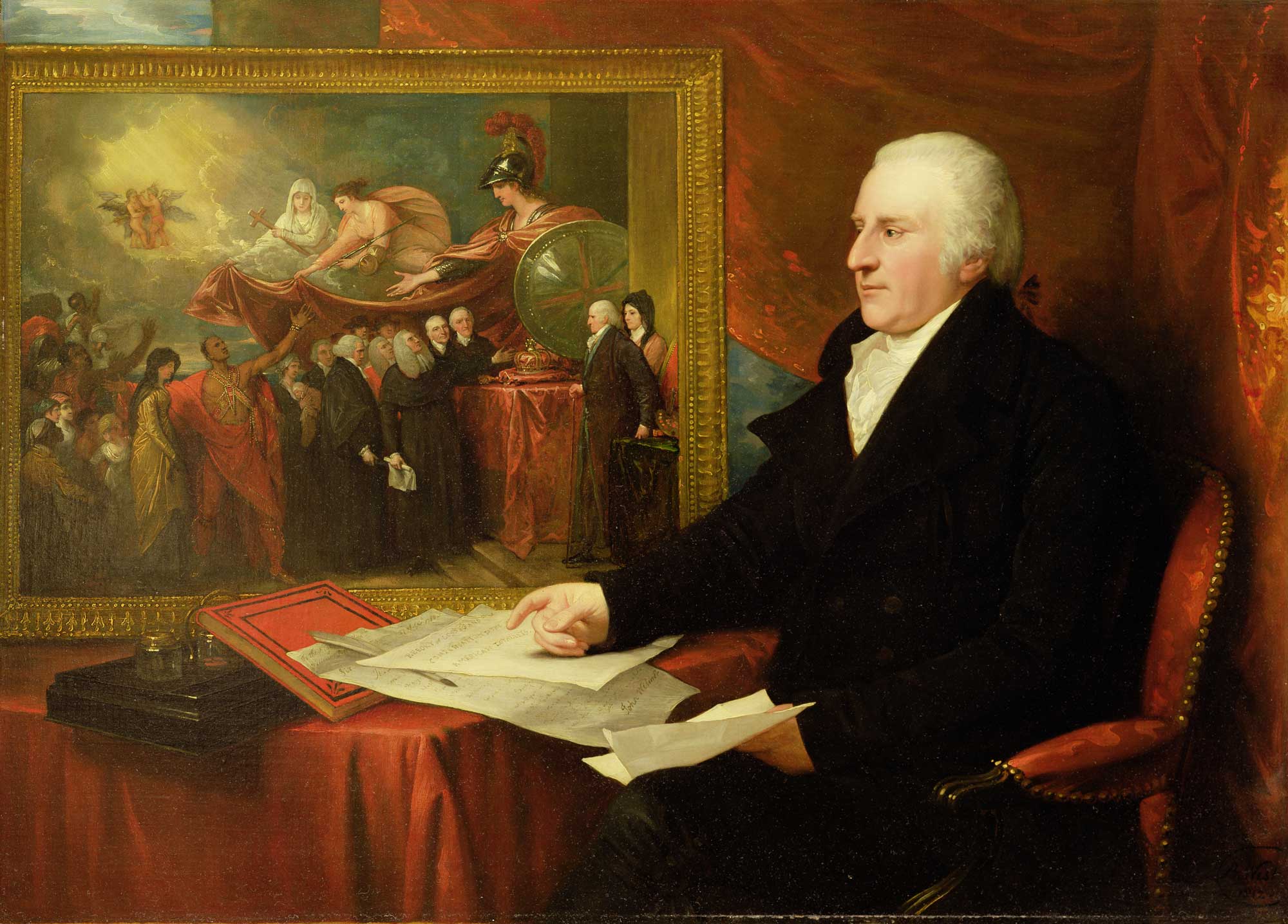
|
Reception of the American
Loyalists by Great Britain in the Year 1783.
Engraving by H. Moses
after Benjamin West.
|
The
original painting has been lost, but a later drawing based on the
painting defines the characters in the original painting. West
imagined the Loyalists as being welcomed by Britannia when it reality
the overwhelming majority of the 100,000 Tory exiles went not to
Britain but to Canada.
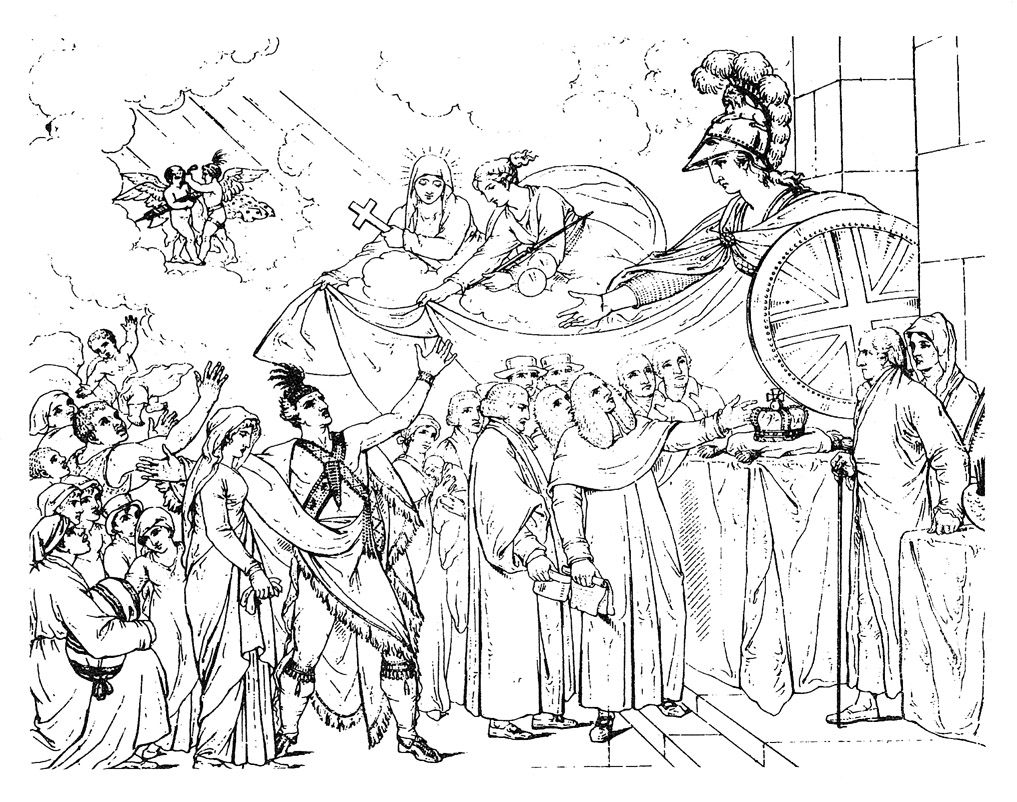
In
the painting and drawing, Religion and Justice extend the mantle of
Britannia, who shields arriving Loyalists led by characters
representing the Law, the Church, and the Government. In a heavenly
cloud, cherubic America and England celebrate the new treaty
of peace and friendship between Britain and America.
William Franklin, son of Benjamin Franklin and a militant Tory
(leftmost robed figure), is among the Loyalist leaders. A loyal
Indian raises one arm in joy and points the
other to a window and orphans, victims of what Wilmot called a civil
war. They are portrayed as ordinary people, not as aristocratic and
wealthy Americans—the common perception. A former slave and
his children look up to Britannia in gratitude, a reminder that
thousands of slaves who became Tories won their freedom for their
allegiance to Britain.
At
the far right stand West and his wife. West,
one of the first American artists to become prominent in Britain, was
a court painter to King George III and a founder of the Royal
Academy. West, born in Pennsylvania in 1738 to Quaker parents, went
to England in 1763 and remained there for the rest of his life.
Wilmot, the subject of the painting above, was a
prominent jurist and close friend of William Blackstone, author of
the legal classic, Commentaries on the Laws of England. In
1766, Wilmot became a member of the Privy Council and the Chief
Justice of the Common Please. After the Revolutionary War ended,
Parliament appointed one of the five members of the Commission
for Enquiring into the Losses, Services and Claims of the American
Loyalists.
The commission
established a spectrum of Loyalty, indicating that the more a
Loyalist did for Britain, the more royal gratitude might be
dispensed. The categories clearly show the ways Americans could be
classified as Tories:
Rendered
services to Great Britain”
Bore
arms against the Rebels
Went
into exile in Britain
Took
oaths of allegiance to the Rebels but later switched to the British
Initially
bore arms for the Rebels but later joined the British Army or Royal
Navy
Loyalists did not do well before the
commission. Skeptical Commissioner Wilmot noted that “all of
the claimants and all of the witnesses were in turn Parties and
Witnesses for each other; they had of course a natural bias to
support each other's claim.” Parliament was tight-fisted, one
member saying that “if the Loyalists were paid the whole of
their Loss, they would be in a better situation that they were before
the war.”
An analysis of
2,063 petitions showed claims for about $35 million real and personal
property, $11.77 million in debts and $443,000 in lost incomes. Of
1,680 claims examined, the commission allowed the collection of
$9,448,000. (The dollar figures come from a 1904 report from the
Bureau of Archives of the Province of Ontario.) By 1788, the
commissioners had handled more than 5,000 claims, disallowing about
one in five.
The
greatest reward for loyalty came in the form of grants of land in the
Canadian wilderness. As many as 100,000 Loyalists eventually migrated
to Canada.
In this
romanticized view (below),
published in 1925, well-dressed gentlemen meet Loyalists landing in
1783 at the mouth of the St. John River
after sailing from New York City. In reality, the voyage was hard and
the arrival disheartening. One of the
new Canadians climbed to the top of a desolate hill to watch the
sails of her ship disappear over the horizon. “[S]uch a feeling
of loneliness came over me,” she later wrote, “that,
though I had not shed a tear through all the war, I sat down on the
damp moss with my baby on my lap and cried bitterly.” One
touch of reality in the painting: two black faces. Some 3,000
ex-slaves, given freedom and land, were among the new Canadians.
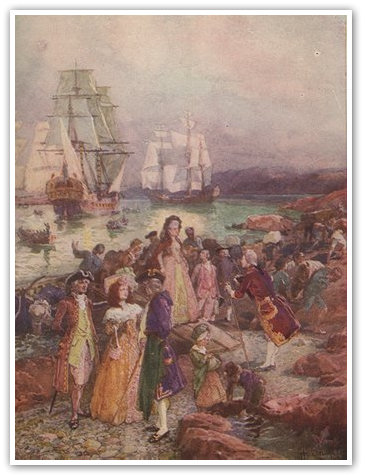
The
Coming of the Loyalists
by Henry Sandham.
Library
and Archives Canada
| 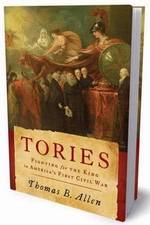

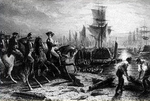
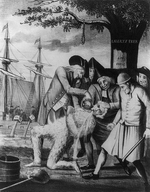
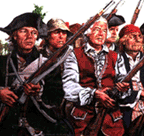
 The Declaration of
Independence said that by July 1776 the time had come “for one
people to dissolve the political bands which have connected them with
another.” But the signers of the Declaration knew that they
spoke, not for “one people” but for a divided people.
Tens of thousands of Americans opposed the Revolution. They called
themselves Loyalists; the Patriots called them Tories.
The Declaration of
Independence said that by July 1776 the time had come “for one
people to dissolve the political bands which have connected them with
another.” But the signers of the Declaration knew that they
spoke, not for “one people” but for a divided people.
Tens of thousands of Americans opposed the Revolution. They called
themselves Loyalists; the Patriots called them Tories.


